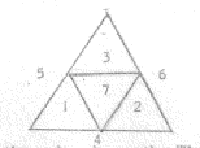
PORTFOLIO or man's collective social wisdom
Provisionally compiled as a research instrument
for the Research Assembly of the Spirit Movement1971
"Understanding, discovery, invention…From the first awakening of his reflective consciousness, .Man has
been possessed by the demon of discovery; but until a very recent epoch this profound need remained latent,
diffused and unorganized in the human mass. Today without our having noticed it, the situation is
entirelv changed. In fields embracing every aspect of physical matter, life and thought, the research-
workers are to be numbered in hundreds of thousands, and they no longer work in isolation, but in teams
endowed with penetrative powers that it seems nothing can withstand. Research which until yesterday was a
luxury pursuit, is in process of becoming a major, indeed
the principle function of humanity."
GUIDE TO THE CORPORATE
READING RESEARCH PORTFOLIO
THE HISTORY
The corporate Reading Research Project was designed in
the winter quarter of 1971 as an experiment in corporate research methodology.
During the spring quarter over 1500 books were "screened'' by the
global movement and sent to base, and the research methodology was refined
to organize the material into a research instrument for Summer '71.
The key to the methodology was found in clearly stating
the questions we want to ask of the resource books. The questions for this
research project were formulated to "screen" out insights that
would be meaningful in the work of the summer. All other information was
left in the book. Thus, the object was to gather from classical sources
and contemporary material all data that might generate insights into the
Social Dynamics of Humanness, the Primary Contradictions, Practical Proposals
and Inclusive Vision.
THE SCREEN
This portfolio contains screens on 400 books that should
be particularly helpful for the Research Assembly. The Portfolio is a tool
for developing the Common Mind of the Research Assembly, providing groundings
for the Social Dynamics, and the workshops, dealing with the contradictions
and proposals.
The format of the screen is organized with the author
and title of the book at the top. The next listing is a statement of the
author's thesis and key sections. The thesis and clues will help you get
a picture of the whole book and indicate the particular references that
are key to getting on top of the thrust of the whole book. The back of
the screen contains a chart of the book and quotes that illuminate the
insights on the front. Listed on the front are insights from the book that
relate respectively to the Social Dynamics, the Primary Contradictions,
the Practical Proposals and the Inclusive Vision.
THE INDEXES
In the front of the Portfolio are several indexes which will enable you to find the report which will be most closely related to your particular task. The First Index records all of the screens and is organized alphabetically by author. The Second Index is organized by the categories of Economic, Sense, Symbol, Style, Political and General, and within each of these categories the books are listed alphabetically by author. The next indexes are organized by insights. For example, if you were interested in information on wealth resources you would find listed on that index all the books that have any insights in that area. Finally there is a list of the 500 basic research books for the summer which are located in the Basic Library of each Corps. The last Index lists the 500 Basic Books in Economic, Sense, Symbol, Style, Political and General categories.
Included in the Portfolio are screens on 200 of the Books
1n the Basic Library, these screens are marked "Lib" in the upper
righthand corner, and the books from which these screens were done
are available in the Basic Library of each Corps. In addition to the Basic
Books, the Corps Library will have a book of research screens in one of
the Economic, Political or Cultural areas, although the Research Book contains
some screens in all three areas.
THE CODE
The Code in the upper right-hand corner of the screen
will indicate quickly the areas of the social dynamics with which the book
deals. The first two numbers are the "Book Code". The first number
of this code indicates whether the book is primarily Economic (1), Sense
(2), Symbol (3), Style (4), Political (5), or General (6). The second number
of the book code indicates which week of the summer the book most closely
relates to: Social Dynamics (1), Major Contradiction (2), Practical Proposals
(3) or Inclusive Vision (4). The next six members comprise the "Insight
Code". This code indicates in which dimension of the social triangles
the author has key insights. For example: for Economic Insights, Resources
code 1, Production code 2, Distribution code 3, Resources
and Production - code 4, Resources and Distribution code 5, Production
and distribution code 6 and if key insights are present in all 3
dimensions the code is 7.
CODE CHART: INSIGHT

.
The final two numbers of the code make up the "Value
Code." This code suggests how important the book is for Summer 71.
The first number indicates the generative impact the book had on the reporter
and the second number indicates the timelessness of the author's insights.
|
CODE CHART: VALUE |
||||
|
GENERATIVE IMPACT ON YOU |
||||
| TIMELESSNESS
of author's insight |
Restated Your Wisdom 10 |
Broaden Your Insight 20 |
Pushed Your Depths 30 |
Exploded Your Images 40 |
DECADE 01 |
|
|
|
|
GENERATION 02 |
|
|
|
|
CENTURY 03 |
|
|
|
|
ETERNAL 04 |
|
|
|
|
.